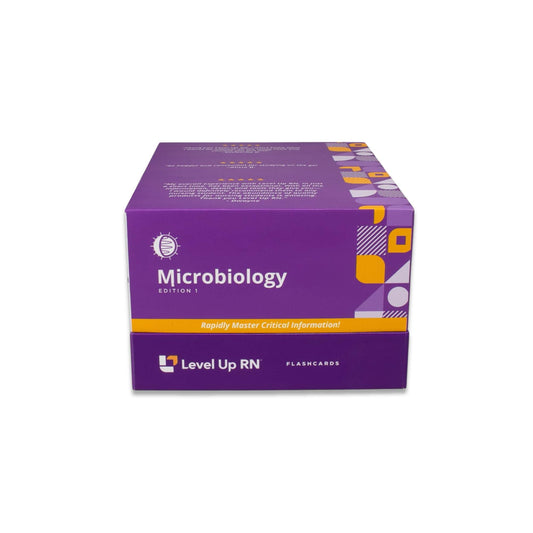Microbiology, part 49: Acellular Infectious Agents - Viroids & Prions
Two types of acellular infectious agents: viroids and prions.
Full Transcript: Microbiology, part 49: Acellular Infectious Agents - Viroids & Prions
Full Transcript: Microbiology, part 49: Acellular Infectious Agents - Viroids & Prions
Hi, I'm Cathy with Level Up RN. In this video, I am going to wrap up my coverage of acellular infectious agents with a brief discussion of viroids and prions. At the end of the video, I'm going to give you guys a little quiz to test your understanding of some of the key facts I'll be covering in the video, so be sure to stay for that. And if you have our Level Up RN microbiology flashcards, go ahead and pull out your flashcard on viroids and prions so you can follow along with me. And of note, our flashcards are also available in digital format via Flashables.
In the last couple of videos in this microbiology playlist, we have focused on viruses. So a virus is one type of a cellular infectious agent. It is composed of a nucleic acid, either DNA or RNA, surrounded by a capsid, which is made up of proteins. A viroid is another type of acellular infectious agent. A viroid consists of a short strand of circular RNA without a protein coat surrounding the RNA. Viroids only cause diseases in plants, so they are not pathogenic towards animals, which includes humans.
A prion is another key type of acellular infectious agent. A prion is a misfolded protein that causes other normal proteins to also fold abnormally. So a prion does not contain DNA or RNA. It is just a protein. So our cool chicken hint to help you remember this is a prion is just a protein. And both of those words start with PR. So when an animal or human becomes infected with a prion, those misfolded proteins form clumps in the brain called plaques. And those plaques interfere with communication between nerve cells, which causes issues with cognition and movement as well as personality changes. Ultimately, prion disease leads to brain degeneration and death. There is no treatment or cure for prion diseases. And of note, prions are resistant to chemicals, heat, and radiation.
Diseases caused by prions are referred to as transmissible spongiform encephalopathies, or TSEs. The spongiform part of that name refers to the holes that develop in brain tissue that give it a sponge-like appearance. And then encephalopathy refers to a disease that impairs brain function. Some of the more well-known examples of TSEs include Creutzfeldt-Jakob disease, Kuru, and bovine spongiform encephalopathy, which is commonly referred to as mad cow disease. In terms of transmission, risk factors include handling or ingesting contaminated meat, as well as transmission during an invasive medical procedure, such as an organ transplant surgery. And in some cases, a TSE can be inherited.
All right. It's quiz time, and I have three questions for you.
Question number one. Which acellular infectious agent is composed solely of RNA and only infects plants, not animals?
The answer is...a viroid.
Question number two. Which acellular infectious agent is a misfolded protein that causes normal proteins to fold abnormally?
The answer is...a prion.
And question number three. Is transmissible spongiform encephalopathy caused by a virus, viroid, or prion?
The answer is...a prion.
All right. That's it for this video. I hope it was helpful. If so, be sure to hit that like button. Take care, and good luck with studying.


